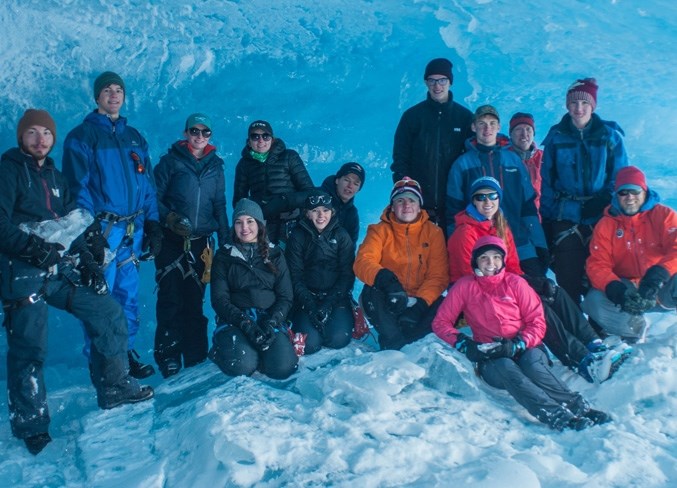In mid-April, 12 students and two teachers from Bow Valley High School (BVHS) set out on a three-day trip that few other Canadian high school students have the chance to take – camping in the Saskatchewan Glacier.
Day two of the trip, while not the coldest that the Alberta icefield area had seen this year, was certainly one of the snowiest.
The group was making its way up from the base of the glacier to the top, in hopes of getting a glimpse of the Columbia Ice fields below. That’s when they were met by a wall of white – snow falling so fast they could only see one or two people ahead of them in their single-file pattern.
It was only a matter of time before they had to turn back.
“We started skiing up in the morning and then it just kind of went whiteout on us,” said student Santana Shukin.
According to Austin Javorsky, who also participated in the trip, the guide threw a rope out to guide students through the blizzard-like conditions.
“It felt a lot longer than it was, because you can’t see where you’re going so you feel like you’re just going nowhere, which is a hard part to get around,” Harry Carter said.
The trip was part of Bow Valley’s Outdoor Leadership program, which aims to teach students about their natural environment and how to navigate it. Most of the students on the trip were in Grade 11 or 12 and all of them had been in the program since starting high school.
It was the third time BVHS students had made the trip, though the school touts that no other high school in Canada has. They were geared with tents, cooking pots, sleeping bags and skis, among other equipment. The students recalled having to build walls of snow to block the wind while they cooked and slept.
The students gained an understanding of watersheds and how one water system can affect another downstream, said teacher Scott Thompson, who heads the program.
They were also able to see how the glacier has shifted since the last ice age, as well as throughout the past 30 years, by physically navigating the area.
“We’re losing, like, 15 metres of the Saskatchewan Glacier every year, and it’s slowly getting smaller and smaller,” Javorsky said.
Though the group didn’t make it to the top this time, Thompson said it was a practical lesson in glaciers students can’t get in a classroom.
“There’s something very powerful about place-based learning...that does something very significant for kids and for adults,” Thompson said.
“You can talk about glaciers, you can talk about climate change, but it’s not until you’re on one where you go, ‘Oh, this is what we’re talking about.’”



